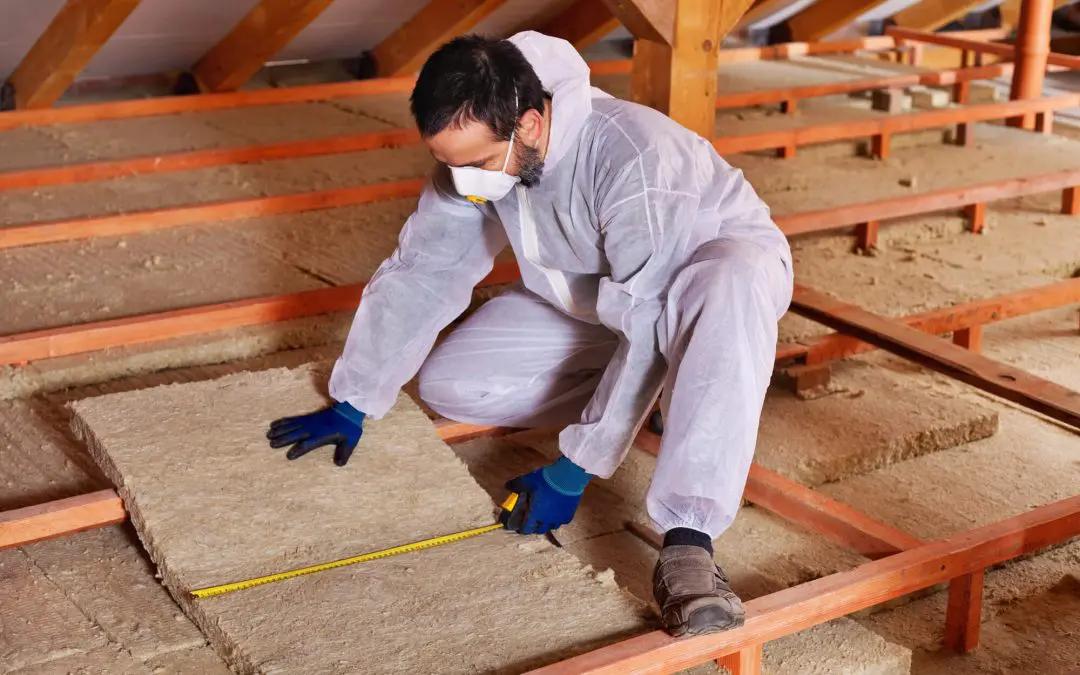Attic insulation plays a crucial role in your home’s comfort, energy efficiency, and even the longevity of your roof. If your attic isn’t properly insulated, you’re likely paying more on your energy bills than you should, and your home may not be as comfortable as it could be. Understanding how attic insulation works and what your options are can save you money and make your home a better place to live.
How Attic Insulation Works
Insulation acts as a barrier that slows down the transfer of heat between your home and the outside world. In the winter, it helps keep warm air inside your house, and in the summer, it keeps the hot air out. Without proper insulation, heat can easily escape in the winter or seep in during the summer, forcing your heating and cooling systems to work harder than necessary. The result? Higher energy bills and inconsistent indoor temperatures.
The effectiveness of insulation is measured in R-values, which indicate how well the material resists heat flow. The higher the R-value, the better the insulation. Different climates require different R-values, so it’s important to know what’s recommended for your area.
Common Types of Attic Insulation
There are several types of attic insulation, each with its own benefits. The most common options include fiberglass batts, blown-in insulation, and spray foam insulation.
Fiberglass batts are one of the most affordable and commonly used insulation types. They come in pre-cut sections and are relatively easy to install. However, they must be placed carefully to avoid gaps that can reduce their effectiveness.
Blown-in insulation, usually made of fiberglass or cellulose, is applied using a machine that sprays the material across the attic floor. This method is great for covering hard-to-reach areas and creating a more uniform layer of insulation.
Spray foam insulation expands to fill gaps and creates an air-tight seal. While it’s more expensive than other options, it offers excellent insulation and can even improve the structural integrity of your home. Spray foam is particularly effective at sealing air leaks, making it a popular choice for homeowners looking to maximize energy efficiency.
Signs Your Attic Insulation Needs an Upgrade
If you’re not sure whether your attic insulation is up to par, there are a few signs to look for. One of the most noticeable indicators is fluctuating indoor temperatures. If some rooms in your home feel much colder or hotter than others, your attic insulation may not be effective.
Another sign is high energy bills. If your heating and cooling costs have been steadily increasing, poor insulation could be the culprit. Inadequate insulation forces your HVAC system to work harder to maintain a comfortable indoor temperature.
You should also check your attic for visible signs of wear. If you see thin or compressed insulation, gaps, or areas where the insulation appears to be missing, it may be time for an upgrade. Additionally, if you notice signs of moisture or mold, your insulation could be compromised, leading to even more issues in the future.
The Benefits of Proper Insulation
Upgrading your attic insulation has a range of benefits beyond lowering your energy bills. First and foremost, it enhances the comfort of your home by keeping temperatures more consistent. You won’t have to freeze in one room while sweating in another.
It also helps extend the life of your roof. When insulation is inadequate, heat can build up in the attic, which can lead to ice dams in the winter or premature aging of your roof in warmer months. Proper insulation helps regulate attic temperatures and prevents these issues.
Another major benefit is improved indoor air quality. A well-insulated attic can help keep out allergens, dust, and pollutants, making your home a healthier place to live. Additionally, it can reduce noise from outside, creating a quieter indoor environment.
If you’re looking to improve your home’s comfort and efficiency, checking your attic insulation is a great place to start. A well-insulated attic can make a significant difference in your energy bills, indoor temperature, and overall home quality.
Frequently Asked Questions
How often should attic insulation be replaced?
Attic insulation doesn’t have a strict expiration date, but it can degrade over time. If your insulation is more than 15-20 years old or has been damaged by moisture, pests, or settling, it may be time for an upgrade.
Can I install attic insulation myself?
While some types of insulation, like fiberglass batts, can be installed as a DIY project, others, such as blown-in or spray foam insulation, are best left to professionals. Proper installation is key to getting the full benefits of insulation, so if you’re unsure, it’s worth hiring an expert.
Is there such a thing as too much insulation?
Yes, adding too much insulation can actually be counterproductive. Over-insulating can restrict proper airflow, leading to moisture buildup and potential mold issues. It’s best to follow the recommended R-value guidelines for your climate.
How do I know what type of insulation is best for my attic?
The best insulation for your attic depends on your budget, climate, and existing insulation. A professional energy audit can help determine the most effective solution for your home.
Does attic insulation help with cooling costs in the summer?
Absolutely! Proper attic insulation doesn’t just keep heat in during the winter—it also keeps your home cooler in the summer by blocking heat from entering through the roof. This reduces strain on your air conditioning system and helps lower cooling costs.
Danny Inspections offers home inspection services to the Chicago metropolitan area. If you’re buying or selling your home, contact us to schedule an appointment.

